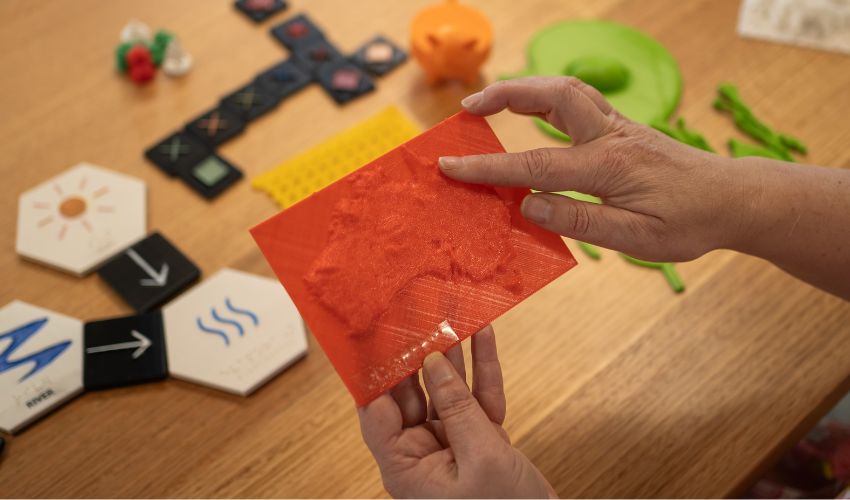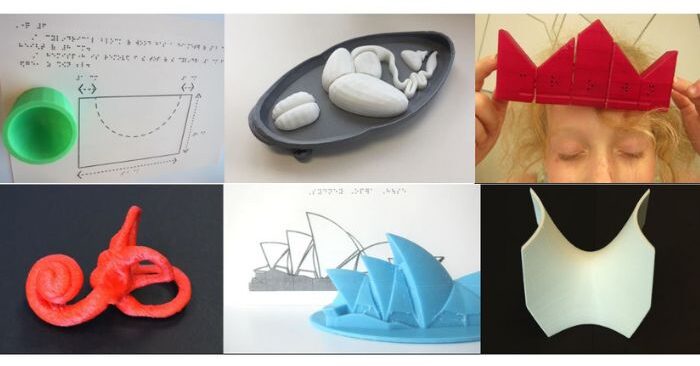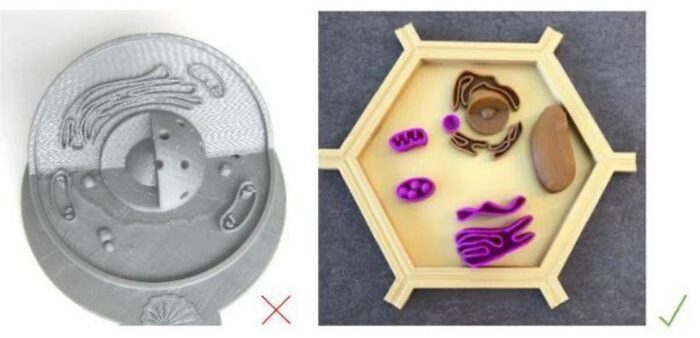Monash University Releases First Guide on 3D Printing for Blind and Low-Vision People

Prosthetics, hearing aids, and wheelchairs — these are just a few of the numerous tools that can be customized and improved thanks to 3D printing technology, benefiting people with disabilities. 3D printing can serve blind or low vision people too, with the creation of tactile objects that carry information. Items that can be 3D printed, like educational models, a map or a replica of an art piece, allow people to learn through touch. However, special consideration must be taken when designing a 3D print specifically for blind or low-vision people. That’s why researchers at Melbourne’s Monash University have shared new guidelines to create 3D printed educational and other accessible tools to support people with “print disabilities.”
In Monash University’s press statement, Leona Holloway from the Faculty of Information Technology said that the free guidelines are specifically designed for people with “print disabilities.” This means those who are not only blind or have low vision, but also those with physical disabilities limiting their ability to interact with 2D materials, those unable to follow a line of print or those with a disability that impacts their concentration.

3D prints for use in the classroom. (Photo credits: Monash University, from “The Guidelines for Producing Accessible Prints”)
Importantly, “The Guidelines for Producing Accessible Prints” are free for the public, and they can help teachers, parents and specialists create inclusive and engaging tactile models. This could include educational materials like braille learning aids, curriculum-based models such as historical artifacts, landforms or anatomy, math aids, educational games or adaptive tools.
“One of the advantages of 3D printed models over raised line drawings, is that they can be used by blind, low vision and sighted students together in educational settings, and they can also be useful for people who are not trained in ‘touch reading’,” Holloway said.
The university researchers worked closely with the non-profit organization, Round Table on Information Access for People with Print Disabilities (Round Table) to create the guide. Additionally, the team got insight from blind and low-vision people. The result is an entirely comprehensive guide: it explains what 3D printing is, how to design for understanding through touch, and more, taking the reader from the beginning to the end of the process.
In the section on how to design for touch, the guide explains, “Touch differs from vision in that very fine details cannot be distinguished and an understanding of the whole must be built up through sequential active exploration of the parts through direct contact with the body.” The guide then describes how to modify features like spacing, height, lines and scale to make the model easy to read by touch.

The 3D printed cell model on the left is not optimized for reading by touch: all features are the same height with crowding. The model on the right is better suited for touch readers: it is larger and uses variable heights, more distinct shapes and wider spacing. (Photo credits: Monash University (left), Texas School for the Blind and Visually Impaired (right), from “The Guidelines for Producing Accessible Prints”)
Sonali Marathe, the President of Round Table, explained the benefit of keeping up with new technologies to explore emerging technologies. “The 3D printed models can help students who are blind get spatial and dimensional understanding of things that they may have never experienced before, for example, for the first time ever students are learning different architectural concepts through 3D printed models of the Burj Khalifa, Taj Mahal and the Statue of Liberty,” Marathe said.
Adrian Riessen, an Orientation and Mobility Teacher at the South Australian School and Services for Vision Impaired (SASSVI), founded a 3D printing club at his school. To him, 3D printing has improved access to curricula that are “historically challenging to teach.”
“Students that struggle with mapping concepts, when they can explore something in 3D it seems to take on more meaning,” Riessen said. “They can feel that it’s a building with a door and a window. It’s not just a square on a white sheet of paper.”
Notably, these guidelines are the first of their kind. “Though there is a lot of information available about 3D printing generally, the accessibility-specific information in these guidelines about how to design and use 3D prints for the blind and low vision community has never been available before,” Marathe added. “We hope these standards are shared and adopted by as many organizations and people across the world as possible.” To access the guidelines, available in print and braille, click here.
What do you think of the 3D printing guidelines for people with print disabilities? Let us know in a comment below or on our LinkedIn, Facebook, and Twitter pages! Don’t forget to sign up for our free weekly Newsletter here, the latest 3D printing news straight to your inbox! You can also find all our videos on our YouTube channel.
*Cover Photo Credits: Monash University






